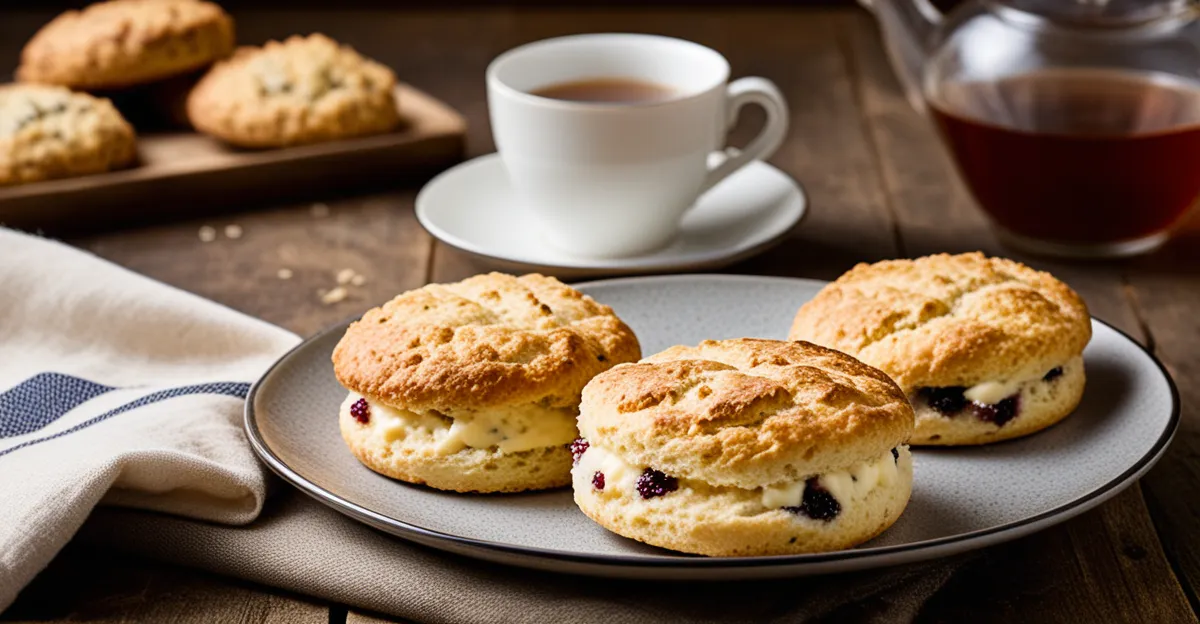Fundamentals of Classic British Scones
Understanding the classic scones starts with mastering the foundational British scone recipe. Traditional scone basics rely on simple, quality ingredients: flour, baking powder, butter, sugar, eggs, and milk or cream. The butter’s coldness is crucial; it’s rubbed into the flour to create a crumbly texture. This method traps air pockets, resulting in a tender, flaky scone once baked.
Texture is a defining characteristic. Classic scones should be slightly crisp on the outside with a soft, light interior that rises evenly. Achieving this demands careful mixing — overworking the dough can develop gluten, making the scone tough. Precise mixing and gentle handling ensure the crumb remains tender, a signature feature.
In parallel : How do you prepare a traditional afternoon tea with a contemporary flair?
Flavour in traditional scones is subtle, allowing accompaniments like clotted cream and jam to shine. The balance between sweetness and buttery richness is delicate.
In sum, the classic British scone recipe prides itself on simplicity, technique, and texture. Understanding these scone basics provides a strong base for experimenting with more creative ingredients or shapes later on, but the heart of a good scone lies in respecting these fundamentals.
In the same genre : How do you make a fluffy and light scone for afternoon tea?
Creative Ingredient Additions and Substitutions
Exploring modern scone flavours involves going beyond the traditional British scone recipe to experiment with unique scone ingredients that enhance both taste and texture. For example, incorporating unexpected fruits like blueberries or dried apricots adds bursts of natural sweetness and moisture. Spices such as cinnamon or cardamom bring warmth and aromatic complexity, while fresh herbs like rosemary or thyme introduce an intriguing savory note. These creative combinations elevate classic scones to new flavour profiles.
When considering savoury vs. sweet modern twists, it’s important to balance ingredients wisely. A savoury scone might include cheese, chives, or sun-dried tomatoes, offering a perfect companion to soups or teas. Sweet versions, contrastingly, can be enriched with chocolate chips or citrus zest, providing delightful treats suitable for dessert or breakfast.
Alternative flours and dairy options expand possibilities in contemporary scone recipes. Using wholemeal or gluten-free flours caters to dietary needs, while substituting milk with yogurt or plant-based alternatives can improve tenderness or yield a different crumb texture. These adjustments reflect a growing appreciation for diverse tastes and dietary preferences without compromising the essence of scone basics.
Ultimately, embracing unique scone ingredients within modern scone flavours opens doors to personalized and inspired culinary creations.






